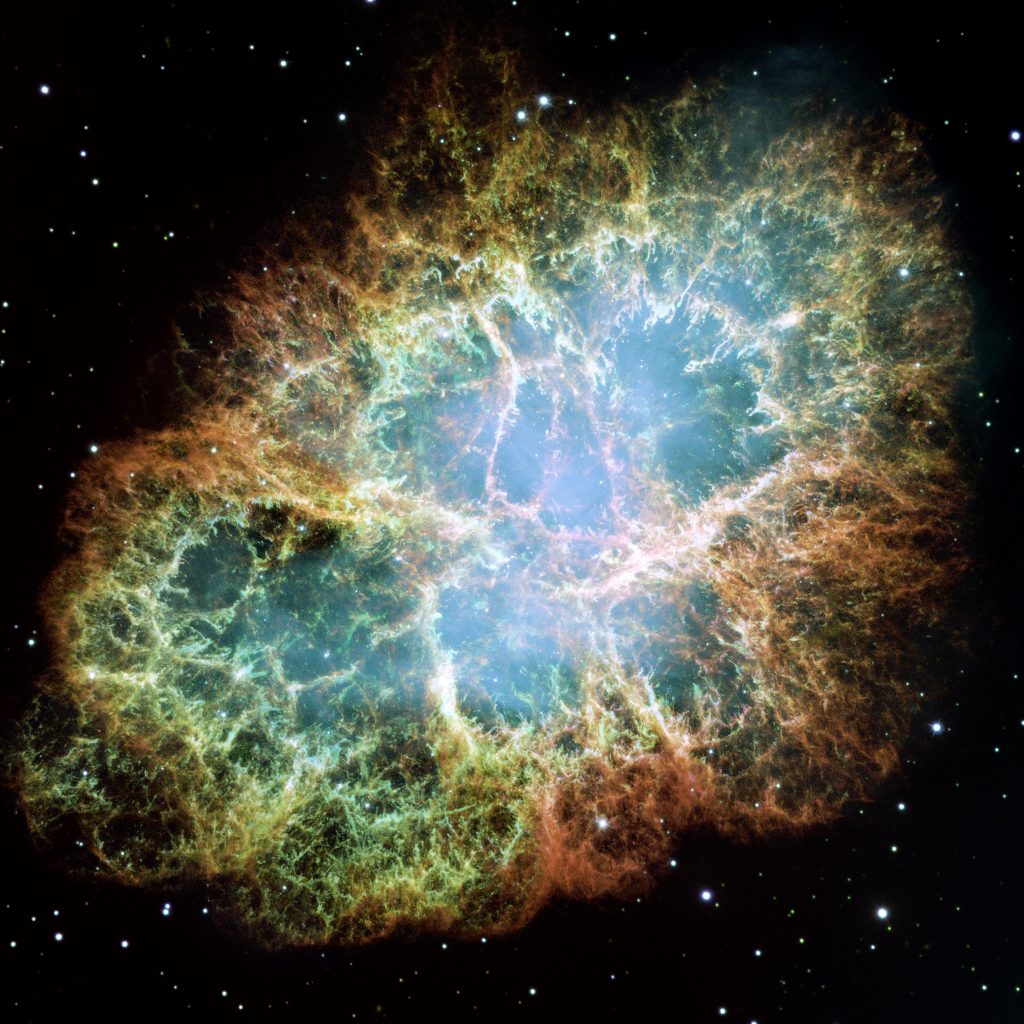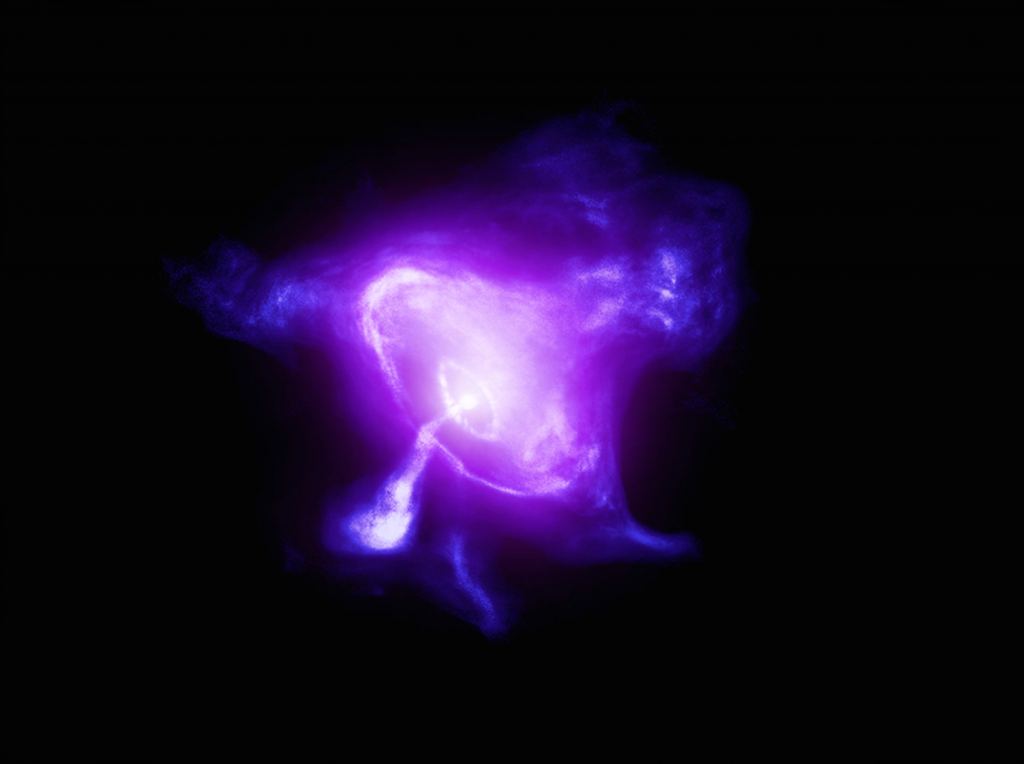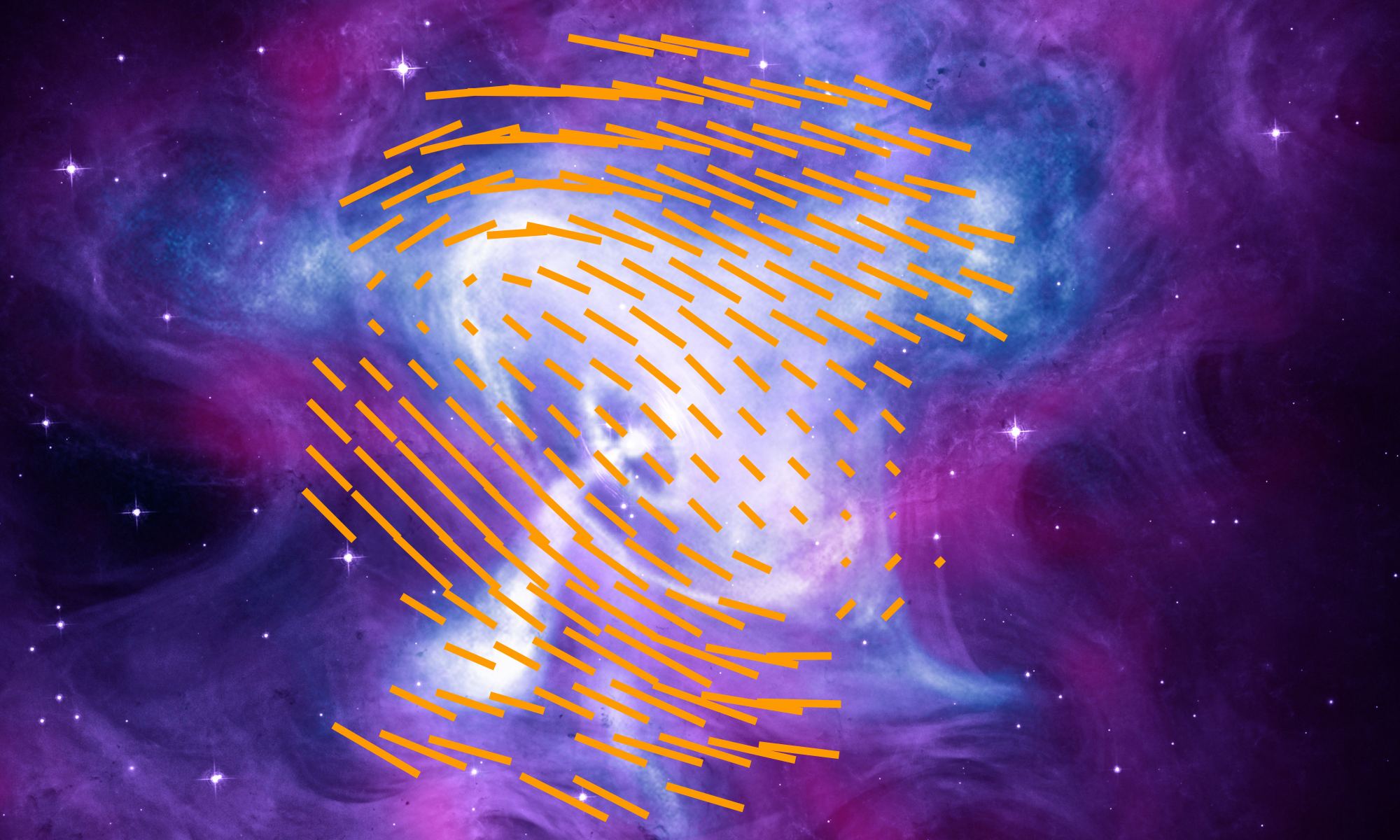Located about 6,500 light-years away in the constellation Taurus resides one of the best-studied cosmological objects known as the Crab Nebula (aka. Messier 1). Originally discovered in the 18th century by English astronomer John Bevis in 1731, the Crab Nebula became the first object included by astronomer Charles Messier in his catalog of Deep Sky Objects. Because of its extreme nature, scientists have been studying the Crab Nebula for decades to learn more about its magnetic field, its high-energy emissions (x-rays), and how these accelerate particles to close to the speed of light.
Astronomers have been particularly interested in studying the polarization of the x-rays produced by the pulsar and what that can tell us about the nebula’s magnetic field. When studies were first conducted in the 1970s, astronomers had to rely on a sounding rocket to get above Earth’s atmosphere and measure the polarization using special sensors. Recently, an international team of astronomers used data obtained by NASA’s Imaging X-ray Polarimetry Explorer (IXPE) to create a detailed map of the Crab Nebula’s magnetic field that has resolved many long-standing mysteries about the object.
The research was led by Niccolo Bucciantini, an Adjoint Professor at the University of Firenze and the Osservatorio Astrofisico di Arcetri. They were joined by researchers from the National Institute for Astrophysics (INAF), the Kavli Institute for Particle Astrophysics and Cosmology, the RIKEN Cluster for Pioneering Research, the MIT Kavli Institute for Astrophysics and Space Research, the Harvard-Smithsonian Center for Astrophysics (CfA), NASA Marshall, NASA Goddard, and multiple universities and research institutes. Their results were published in the journal Nature Astronomy.

A Growing Understanding
The Crab Nebula has been a favorite object of study among astronomers and astrophysicists for decades. Known as a “pulsar wind nebula,” the object is a rotating and pulsating neutron star (aka. a pulsar) surrounded by a mass of gas and dust. The interaction between the two leads to shock waves, high-energy light and particles, and a chaotic magnetic field. These environments are not yet thoroughly understood, giving astronomers an opportunity to learn more about the extreme conditions resulting from supernovae.
In 1971, astronomer Martin Weisskopf – NASA’s Chief Scientist for X-ray Astronomy and an emeritus astronomer at NASA’s Marshall Space Flight Center – conducted the first measurements of its polarization using a sounding rocket. His early work became the basis for his proposal for a more powerful space telescope to study X-ray emissions from nebulas and other cosmic sources regularly. His proposal was realized with the creation of the Chandra X-ray Observatory, launched in 1991, and the IXPE that followed in 2021.
The sounding rocket could study the Crab Nebula for just five minutes before falling back to Earth. This was followed by measurements taken by the 8th Orbiting Solar Observatory (0S0-8) in 1975, a mission designed to study cosmic X-ray sources. These two missions produced much the same result, indicating that the Crab Nebula has an average polarization of about 20%. Throughout the 1990s, Weisskopf continued his explorations of the Crab Nebula as the project scientist for Chandra (one of NASA’s Great Observatories), which revealed new things.
This included wisp-like structures moving inside the nebula that helped scientists gain a new understanding of how the pulsar’s energy and X-ray emissions are related. The Crab Nebula has also been studied by every large telescope deployed since, including Hubble and Spitzer (two more Great Observatories). But it is only the IXPE (of which Weisskopf is the first principal investigator) that has the necessary sensitivity and instruments to measure the nebula’s X-ray emissions and the polarization of its magnetic fields.

The Most Detailed Map Yet
For this latest study (of which Weisskopf was a co-author), Bucciantini and his colleagues hoped to gain new insight into the Crab Nebula by measuring the polarizations of its bright X-ray emissions. By measuring polarization, scientists can learn about the nebula’s magnetic field, like how ordered it is and in which direction it is pointing in different parts of the nebula. The turbulence and geometry of the magnetic field determine how “cosmic ray” particles (electrons and stripped atomic nuclei) get catapulted outwards at close to the speed of light.
The IXPE data showed that the Crab Nebula’s magnetic field is shaped like that of a Vela Pulsar Wind Nebula (donut-shaped). However, contrary to their expectations, the science team noted that certain areas of magnetic field turbulence were more patchy and asymmetrical. “This is a clear indication that even the more complex models developed in the past, with the use of advanced numerical techniques, do not fully capture the complexity of this object,” said Niccolò Bucciantini.
The IXPE measurements led to results similar to what Weisskopf and his colleagues found in the 1970s, indicating the same average polarization across the entire nebula. However, the IXPE’s more-sophisticated instruments were able to refine the angle of polarization and examine small variations across the entire nebula. In particular, they noticed that polarization was lower nearer to the pulsar while also noting the presence of areas of greater polarization light-years away in the outer regions.
This enabled the team to look beyond X-rays coming from the Crab Nebula and investigate those coming from the pulsar itself and the magnetic fields around it. Their findings suggest that these X-rays come from the outer magnetic field region (or “wind” region), though the exact location and cause are still unknown. From this, they deduced that shocks generated by the pulsar’s “wind” within the magnetic field collide with gas and dust particles in the nebula and accelerate them close to the speed of light.

Said Michela Negro, a research scientist at NASA Goddard Space Flight Center and a co-author of the study, “The Crab is one of the most-studied high-energy astrophysical objects in the sky. So it is extremely exciting that we could learn something new about this system by looking through IXPE’s ‘polarized lenses.'”
For Weisskopf, these results feel like a validation of sorts, as they both confirm and build on what he and his colleagues have been working towards for many decades. “I’m very proud of everybody associated with IXPE,” he said. “Everybody has worked so hard, and it works as advertised. It’s like somebody said to me, ‘Martin, you did good.’”
Further Reading: NASA, Nature Astronomy

